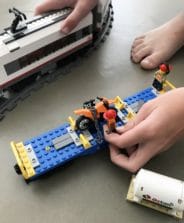
Why am I doing this weird hand stretch? Well because using a iPhone regularly causes my hand; wrist and arm to feel tight and seize up all to often. How about the kids could they open the tiny foil packets of Easter Eggs? If not; this could be the first indicator of ‘Swipe Hands’ the body developmental changing our children are facing as technologies are used too often.
‘Swipe hands’ ruining kids development
Ever had sore hands or wrist from holding your phone for too long? Got a twinge of pain up in the forearm or shoulder pain due to holding your device?
This physical body change is the beginnings of reshaping delicate hand muscles in the wrist and our general posture to remain comfortable holding these devices; it is changing the development of our children.
What are ‘swipe hands’?
Swipe hands are fast becoming a human body dysfunction. Swipe hands are hands and fingers that have developed an innate rigidity and lack movement.
The hand seems to unintentionally create a two-finger swipe shape. Meaning the two fingers are closed together and only creating a swipe motion, the shape your hand and wrist create to swipe on a device. The muscles are then reforming into this shape to provide support for the device we are holding rather than other purposeful uses.
Our bodies and those of children’s bodies are changing physiologically. Our muscles are developing differently to making alterations to ensure our comfort; we are over training the delicate hand muscles in a way that is becoming a detriment to our bodies when we try to use them for fine 0r gross motor tasks.
The most frightful fact is school age children and adults are now seeking medical advice for pain, soreness and arthritis in the hand. Many children of prep age are attending school with this type of hand development effecting their overall education and health.
Pre to the ‘swipe hands’
In recent years our baby to toddler development has changed as adult socialital habits have formed. Children are spending up to +5 hours daily on technology using devices at times when devices should not be used. Gone are the days of children sitting in a pram looking at the world going by, talking about the trees, animals, smells in the air, looking at colour of the world and gaining important eye development of looking into the distance. Children formally had valuable learning taking place in this time as they learnt how to describe things they had seen and had the opportunity to ask questions also developing the speaking skills require to form language development.
Children now are growing up being push in a pram or driven in the car with an iPad or phone in their hand. Children are waking in the morning in bed and turning over to switch on a device, not to get up and play with Lego or draw or read.

Studies have shown a loss of fine motor skill due to these technology habits are affecting handwriting, opening of small objects (opening food containers, holding objects, unable to tie shoe laces) due to mere fact they cannot create the integral finger movements to make the knots.
Many children are unable to hold scissors and cut in a straight line; unable to pick up tiny pieces of wool or block building, bead a piece of macaroni due their lack of focus as hand eye coordination is affected. Further body implication include: posture changes, eye development for distance and perspective from the back light as well as basic word development due to loss in the spoken language as children sit with devices they are not speaking to people or parents.
Research has indicated a dramatic rise in the effects of hand, wrist and shoulder pain caused through holding these devices. In the American Medical Journal research has been made into the causes of Hand Osteoarthritis and these were some key finding:
It has been suggested that physical functioning might represent only one perspective of functioning, and a more comprehensive perspective of functioning could include “participation” in daily life as a key concept relevant to patients.
It goes on further to stipulate the changes in our societal habits and the new daily life we are doing less finger functions therefore our hand fine motor and muscle balance we are not maintaining overall body health.

b.truth:
On a personal note this fact of swipe hands emotionally affects me daily; 14 year of teaching has shown a dramatic visual change and not only have I noticed it, but comments are made constantly by other teachers the fact that children attend pre-prep and prep-school unable to do simple fine and gross motor skill affecting their overall confidence and self worth. These poor little children wonder why they can’t do things and then re-teaching them simple hand and body function skills makes them feel ‘worthless’. The child’s confidence is affected thus causing emotional and anxiety issues. These are skills, which are developed between the ages of 1-5. The simple skill set being missed as a toddler making the children miss the integral educational skills of prep- year 2 due to back tracking to reteach hand- eye coordination skill base and basic fine motors.

Technology benefits and balance
Computer technologies are a huge benefit to our society and have very important role to provide all humans; this being said, our bodies also require the body balance to ensure our optimal health is maintained to ensure our bodies remain strong and healthy. Time frames and body exercise will ensure we can still maintain good health and fulfill our desire and need of technologies.
If your school is on a 1-1 program of technological development ensure the children are gaining the body movement activities to counteract the fine motor and gross motor loss in movement due to computer technologies. These are part of the Australian Curriculum in the Health and Physical Education section and should be adhered too.
Healthy recommendation for screen time
Adult recommendations:
- Create time slots for technology time
- Maximum 30 minutes for screen time (set the timer on the device)
- Compete hand exercise every hour if working long hours on a device.
Children recommendations:
- Optometrist recommends 15-20mins only for healthy children eye development
- Limit technology time to 30 minutes morning and 30 minutes afternoon.
- Use balanced body tasks and whole body muscle movements to ensure good blood flow.
- Ensure a balance of fine motor skills using pencil, play dough, or block building.
We can fix and improve the issue by simply completing some easy hand and wrist exercises.
Exercise for hands and bodies to curb the ‘swipe hand’
Exercise 1:
Create a fist with both hands and then extend fingers outwards stretching fingers as far and long as possible.
Exercise 2:
Each finger to thumb touch; move each finger to touch finger tip then stretch fingers out wide.
Exercise 3:
Crossing fingers over each other.
Exercise 4:
Rotate thumb joints in a circular motion; both clockwise and anti-clockwise.
Exercise 5:
Hand shake loosing every finger and letting the muscle bounce around.
Exercise 6:
Wrist rotation; move wrist in circular motion rotation around clockwise and anticlockwise.
Exercise 7:
Pull arm across body and open the shoulder.
Add these simple exercises to your kids and your daily routine to improve the mobility of your body and overall health.
Awareness is key to any health changes in our children this is a fact of our societal changes and we will all be ‘ok’ if we are making better health choices to counteract these body changes.
Health and Happiness always,
b.
x
For more information:
https://www.betterhealth.vic.gov.au/health/conditionsandtreatments/arthritis-juvenile
https://www.ncbi.nlm.nih.gov/pmc/articles/PMC1955144/
http://www.9news.com.au/health/2017/04/14/02/49/toddlers-playing-with-touchscreens-sleep-less